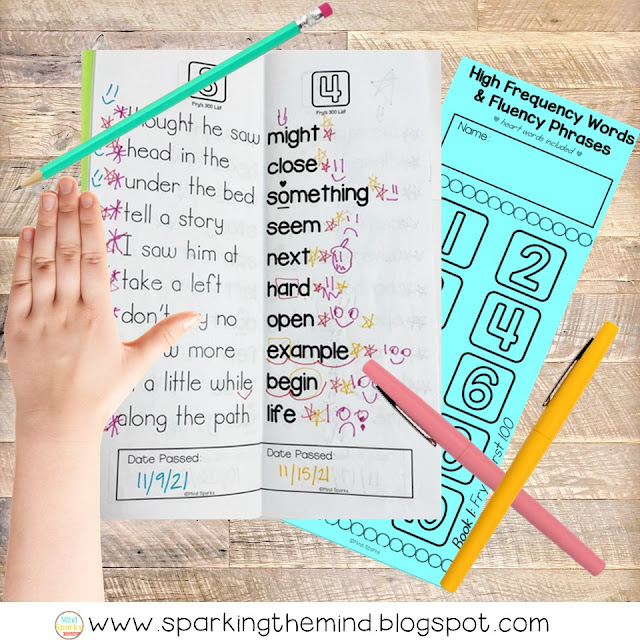You've implemented daily fluency practice....now what?!?
Is what you have implemented moving the needle? Are you helping disfluent readers become fluent?
A way to gauge effectiveness is by tracking student success. Use the following three ideas to begin tracking student progress.
1. Rubric Scoring
- Fluent reading is more than just speed. Fluent reading is E.A.R.S (expression, accuracy, rate and smoothness). One way to track student progress is by scoring your students on a fluency rubric. This can be done bi-weekly, monthly, quarterly, etc.
- Have a student read aloud to you for one minute and score the child based on the fluency rubric of choice. Use the score to conference with students and continue with fluency interventions or adjust to a new plan. Remember students need specific feedback...so they know what to work on!
2. Graph Progress
- Seeing progress is a POWERFUL motivator for students. Graphing progress allows students to see that their effort and hard work is paying off.
- Have students read a fluency passage for one minute and track how many words correct they read (rate) and their accuracy. Students will then place their scores on a graph, similar to the one pictured below. Progress graphing can be done on more than just fluency passages--it can be done with high frequency words, letter naming, letter sounds....anything!
- If you are tracking words correct per minute---make sure you also graph for accuracy. I always draw a black bar at the 95% mark and tell my students that 95% or higher is PERFECT for reading. Tracking accuracy along with WCPM helps students realize that fluent reading isn't just fast reading!
3. High Frequency Words and Phrases Mastery
- Mastering high frequency words and phrases is a great way to develop fluent reading. Using high frequency booklets, flashcards or intensity boards are solid ways for students to get this practice. Rehearsal of high frequency words and phrases becomes more impactful when students are tracking their mastery.
- In my intervention group we use a simple three-star strategy. Each time a student reads a word or phrase correctly, the student gets a star (or other small symbol--smiley face, check mark, etc). Mastery is achieved when students have read a word or phrase three times. We do daily practice, so it typically takes students three days for mastery of a particular set of words or phrases. When they get three stars--they get a small prize and move on to the next list, group of words, etc.
- The images below show an intensity board with high frequency words and high frequency booklets with words and phrases. Both of the images are highlighting how success is being tracked--by plus signs and small symbols.

One important note about tracking student's progress with words correct per minute (WCPM): Student's WCPM scores should be compared to normed scores.
Comparing students scores to normed scores is imperative because normed oral reading fluency scores have proven to be a reliable, useful and practical measure to determine which students might need intervention and which students are proficient readers.
The most widely adopted normed oral reading fluency (ORF) tables are from 25 years of research done by Jan Hasbrouck and Gerald Tindal, typically referred to as the Hasbrouck-Tindal Fluency Norms. Teachers can use these tables to draw conclusions and make decisions about the oral reading fluency progress of their students.
If you are interested in more information about the fluency norms, check out this article from Reading Rockets which takes a deep dive into fluency norm tables.






No comments:
Post a Comment